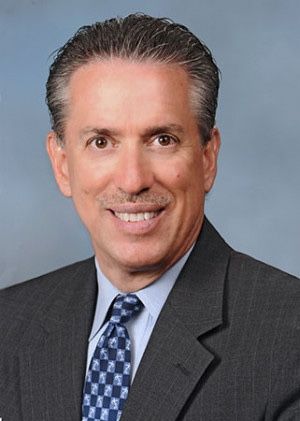To Volunteer Overseas, Find an Organization and Take the Plunge
For Francis G. Serio, D.M.D., one volunteer opportunity in the Dominican Republic changed his life forever. Now, he is a leader in dental philanthropy helping to guide the next generation of dentists.

Volunteering overseas can be a life-changing experience for dentists, but sometimes the hardest part is getting started.
Nearly four decades ago, Francis G. Serio, D.M.D., volunteered to go down to San Jose de Ocoa, a region in the Dominican Republic where many residents don’t have access to regular dental care. He didn’t have grand plans.
“I went the first summer to basically do some extractions and do some fillings,” he said. “And that’s what I did. And I went by myself and I had a terrific time.”
That terrific time turned into a life’s work. What started as a solo trip is now the Dominican Dental Mission Project, an effort responsible for millions of dollars in free dental care. Each summer, Serio and a number of recruits and students head down to the Dominican Republic to provide a wide range of dental care, including full dentures. For the residents of San Jose de Ocoa, it has been life-changing opportunity. But it’s changed Serio’s life, too.
In 2015, Serio was given the American Dental Association’s Humanitarian Award for his work
The work became Serio’s passion, and it’s a passion he’s eager to share with other dentists.
Serio frequently gives talks on the subject of international volunteering. Each time he does, he’s approached by dentists interested in the concept of volunteering overseas, but unsure about how to make it happen.
Serio spoke with Dentist’s Money Digestâ to offer tips and answers for dentists interested in taking the leap.
Getting Started
For many dentists, the first major hurdle is simply figuring out where, and how, they could go. When he first started in the early 1980s, Serio went by himself after connecting with a medical mission organization. He chose to go to San Jose de Ocoa for the simple reason that the nuns there were bilingual.
Today, it’s a much different landscape.
“Nowadays there are a bunch of folks from International College of Dentists, the Academy of Dentistry International, and others that go around lecturing on how to get involved in international dental projects,” he said. “In 1982 none of that existed.”
The ADA Foundation also has a webpage that can help dentists connect with mission organizations.
Another issue is funding. Serio and his family have chosen to make the Dominican mission the cornerstone of their philanthropy, though he also receives donations, including a grant last year from the International College of Dentists. Serio asks fellow volunteers to pay for their in-country costs, and he said many of the supplies are donated by dental supply companies. Collecting that money and those supplies takes extra time, but Serio said he’s able to fit it into his normal schedule.
“If you added up all the hours it takes, yeah, it takes some time,” he said. “But it’s not like I have to sit down and do everything in two days.”
Furthermore, that work is mostly due to Serio’s entrepreneurial spirit and the fact that he runs the dental mission. For most dental missionaries, such administrative and fundraising work is taken care of by the sending mission organization or foundation. That’s one reason why Serio says it’s best to start out by joining up with an established group.
“I would absolutely recommend somebody doing this for the first time go with an established group,” he said.
How do you choose? Serio said there are many organizations to choose from, some based on affinity groups or religious groups. He said would-be volunteers should talk to previous volunteers and also ask the administrators of the sending organization plenty of questions.
“If the administrators don’t seem that responsive maybe you should find another project,” he said.
Regulatory Hurdles
Another issue faced by dentists traveling overseas is the regulatory landscape. Different countries have different rules about what licenses or permits -- if any -- a dentist needs in order to provide care.
“It’s very site-specific,” he said.
Dentists also need to think about malpractice insurance. In most cases, Serio said, a dentist’s regular malpractice insurance won’t cover international mission trips. However, a number of organizations offer malpractice insurance specifically geared toward covering foreign missions. Serio said the cost of these policies is very low, making it a reasonable purchase on the off chance that a malpractice complaint arises.
Serio added that dentists will also need to make sure they have medical insurance. In most cases, that means buying a travel health insurance policy.
‘Just do it.’
As a whole, Serio said, dentists tend to be very generous, giving back to their local communities through philanthropy and mission of mercy clinics. He realizes that a trip overseas can be a headache and a financial sacrifice -- particularly for early career dentists. However, Serio said the vast majority of dentists who go overseas enjoy the trip and find it worthwhile. Ultimately, the biggest hurdle for some is simply deciding to take the first step.
“Remember the old Nike slogan, ‘Just do it?’” he said. “You get to that point where you have to just start, just do it.”
For more dentists profiles:
- Texas Dentist Grateful for What He’s Been Given, and Can Give Back
- Texas Periodontist Finds Himself Where He Was Meant to Be